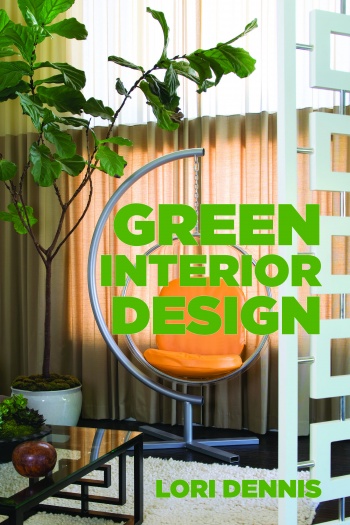I’ve been asked by my publisher to prepare these tips for my upcoming book tour and thought I’d share them with you too.
1. Clean often (and vacuum) with non toxic products. That layer of dust in your home includes dead skin from humans and pets (not so bad) and a breakdown of walls, fabrics, paints, plastics which probably contain carcinogens. This is why interior air is often more harmful than exterior air. Keeping it clean is one of your best Green Interior Design strategies. A proper green clean arsenal includes:
- white vinegar, baking soda, peroxide and rags for cleaning
- vegetable oil with a few drops of lemon for polishing
- a hefty portion of elbow grease
2. Remove shoes when entering your home. You wouldn’t believe how many toxins your shoes pick up from the streets, driveways and gardens. Taking off shoes before entering a home helps to prevent these chemicals from coming inside.
3. Open the windows and let the sunshine in. Sunlight is a natural disinfectant. Even if you live in an apartment, you can place pillows, blankets and mattresses in front of an open window to allow solar rays and fresh air to help sanitize them.
It’s a lot easier than steam cleaning them too!
4. Reuse what you already have. If you are inspired by a space you see in a magazine, look around your home or office. What pieces do you have that are a similar look, scale, color? Arrange existing items in the same way as the magazine spread. You’ll be amazed by how you old things take on a fresh, new look.
5. Next time you’re going to buy cut flowers, consider a flowering plant instead. If you take care of it, it can last for decades. An added bonus is that plants help to clean the air and produce oxygen. Gerber Daisies, Peace Lilies and Bamboo are cool looking plants that do this well. Studies have shown that plants improve your mood. Market cut flowers are expensive and usually grown with copious amounts of petrochemical pesticides, insecticides and herbicides, plus they often travel across continents to get to you. That’s a lot of poison production and wasted energy.
6. If you really want or need something entirely new, comb through what you have. Sell something that you aren’t using on Craigslist or at a yard sale to offset the cost of the new item. Preferably buy the “new” item used. One man’s trash is another’s treasure.
7. Don’t water you grass. Let it die, rip it up and throw in seasonal seeds from your favorite veggies and fruit. There’s nothing as tasty as fresh tomatoes from your own garden. If you live in an apartment, ask if you can borrow communal space or plant in a pot next to a window.
8. Remove or unplug electric devices from your bedroom when sleeping. Electromagnetic fields react with electronic devices confusing your natural body rhythms and making your sleep less sound. Darker rooms also help to increase melatonin production, resulting in a regenerative night of rest. So close the blinds or curtains all the way each night or wear a sleep mask.
9. If it’s yellow, let it mellow. If it’s brown, flush it down. Arid states like California are familiar with this drought time slogan. In an attempt to use less water only flush when absolutely necessary- or when guests arrive.
10. Don’t throw away food. Keep it old school and make breads, cakes, soups and sauces from rotting produce. You can also compost for your garden if food is beyond use.




